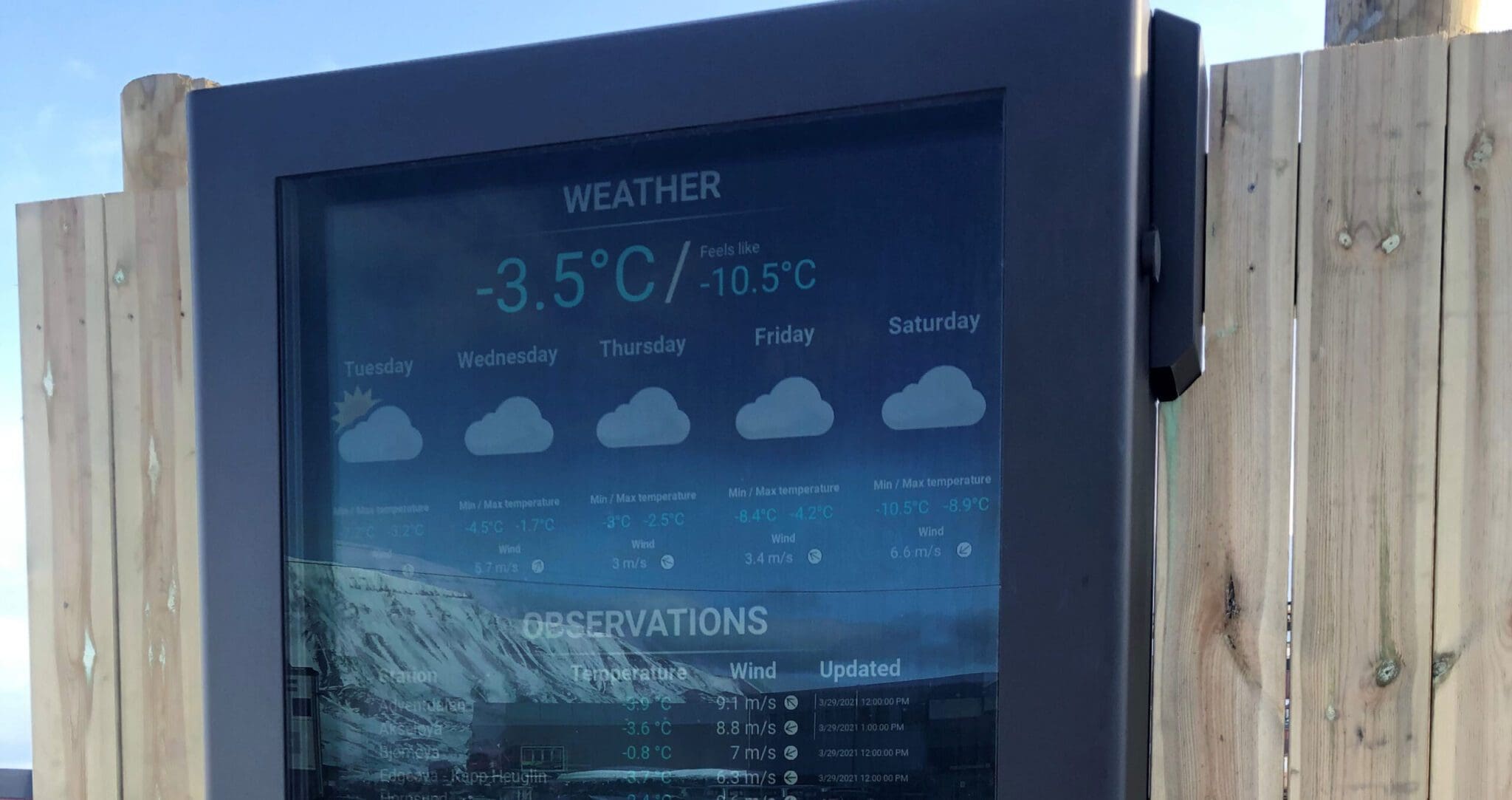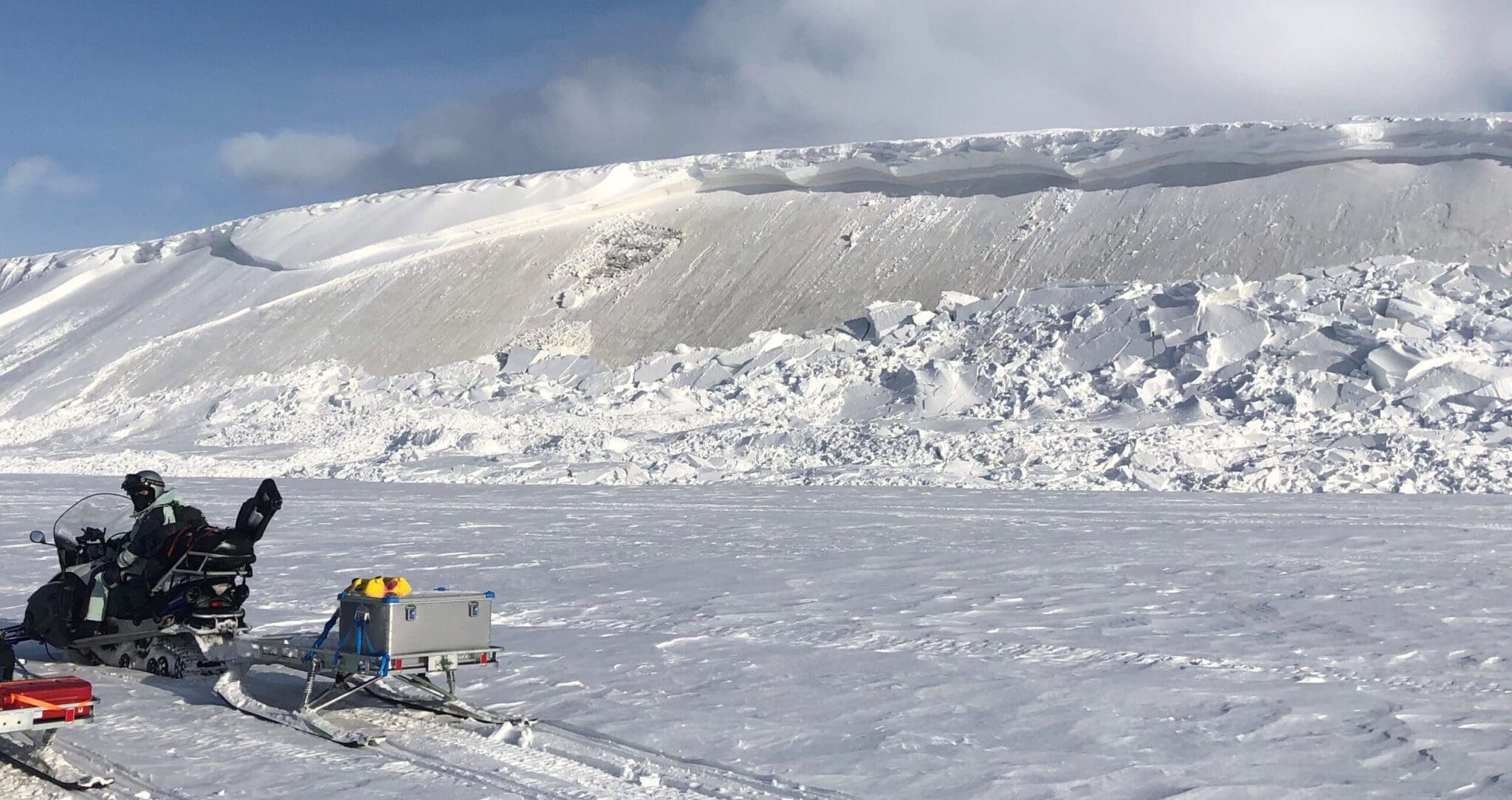Ready, biip, green – have a safe trip!

Top image: Check the forecast before heading out on a trip. And by going close to the beacon-checker you’ll get a green “Go” signal if your avalanche beacon is turned on correctly.
Many locals and tourists on Svalbard are looking for great outdoor experiences in the Arctic, and Easter is high season for snowmobile- and ski trips. An information board with weather forecast, avalanche warning and beacon-check aims to contribute to increased awareness before people go into the wild.
29 March 2021
Text: Maria Philippa Rossi
“The idea behind the board is to share information that can be used by groups and individuals to assess whether they should go into the field or not. The board will have current information about conditions such as weather forecasts, avalanche warnings and information from local weather stations,” says Martin Indreiten, general manager at the Arctic Safety Centre.
Longyearbyen Lokalstyre and Telenor Svalbard have set up and operate the board. Arctic Safety Centre is involved in the idea and concept development.
Indreiten emphasizes that the information on the board is important information for everyone who travels in the terrain, and it provides an opportunity for updated information.
“The weather on Svalbard can be brutal, and it changes fast. Conditions may have changed since plans were made the day before. In addition, we believe the availability of the information involves the whole group in the decision-making and assessment of the current conditions.”

Remember to check the avalanche beacon
The information board is at the exit to Adventdalen, a natural starting point for many private and commercial trips.
“Everyone in the group can easily check that they have turned on their avalanche beacon. This is done by passing the “Beacon checker” which gives a green light if you have turned it on and it is correctly in send-mode,” says Indreiten.
In the long run, the aim of the board is to act as an interactive “Safety bulletin” that also provides specific information on field conditions such as polar bears sightings, difficult driving conditions such as surface water, unstable ice, etc.
When asked if people have enough knowledge about going into the field, Indreiten says that few people are fully trained.
“You can probably never get enough knowledge, and knowledge is fresh.”
“Furthermore, knowledge itself is not enough, it should be combined with practical experience. In addition, we see that climate change affects the dangers that we must deal with in the Arctic, hence, it becomes even more important to have updated real-time information about the conditions.”

Seek out information before you go on a trip
Indreiten points out that there is a lot of information available. At Varsom.no you will find Snøskredskolen with practical tips for trip planning and opportunities to read up on various topics related to landslides.
“NVE has a steepness maps that identifies avalanche terrain and run-out zones. The same can be found on the Varsom-RegObs app, where individuals can enter their own observations from the field. The University Center on Svalbard (UNIS) has local weather stations that can be nice to check before going on a trip.”
One of the biggest challenges for snowmobile drivers on Svalbard is that many of the snowmobile trails follow or go in run-out zones or terrain traps where an avalanche will have serious consequences.
“On a snowmobile, you cover large areas in a short period of time, and it can be challenging to identify a change in the terrain and snow cover. You can go from a safe to exposed area without being aware of it.”
He highlights the importance of being able to read and understand the avalanche warning and stay clear when the forecast predicts high danger levels. In short, avoid avalanche terrain, run-out zones and terrain traps.
Hopefully the information board will give you the information you need to be able to assess possible dangers before your trip.
